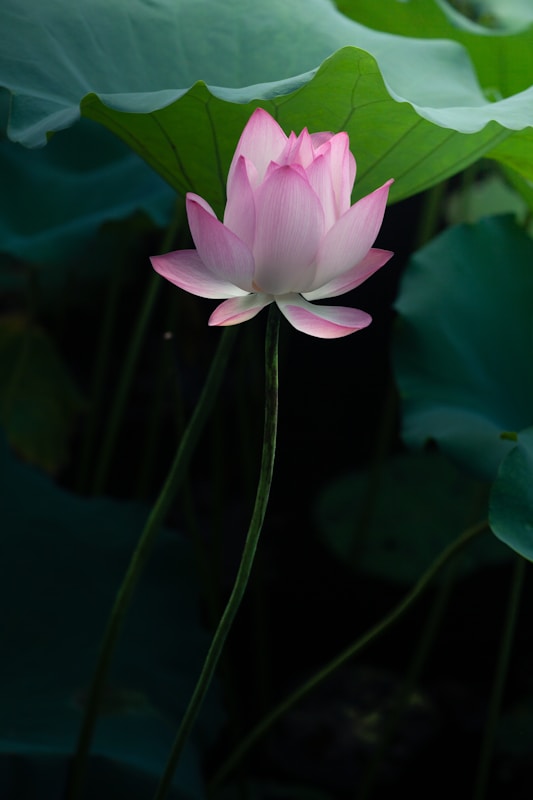What is the Sacred Lotus Flower?
The sacred lotus flower (Nelumbo nucifera) is one of the most revered plants in the world. Known for its pure beauty, this aquatic perennial grows in shallow ponds, lakes, and rivers, producing large pink or white blossoms. Native to Asia and Australia, the lotus has been a cultural, spiritual, and medicinal symbol for thousands of years.
Table of Contents
Symbolism and Cultural Importance of the Sacred Lotus
The sacred lotus flower holds deep meaning across various cultures:
Sacred Lotus in Buddhism
In Buddhism, the lotus symbolizes purity, enlightenment, and rebirth. The flower’s ability to rise from muddy waters into full bloom reflects the journey toward spiritual awakening.
Sacred Lotus in Hinduism
In Hinduism, the lotus represents divine beauty and fertility. It is associated with deities like Lakshmi and Vishnu, signifying prosperity, purity, and creation.
Sacred Lotus in Ancient Egypt
Ancient Egyptians viewed the lotus as a symbol of creation and renewal, often depicted in temple art and burial rituals.

Health and Medicinal Benefits of the Sacred Lotus Flower
Beyond its spiritual symbolism, the sacred lotus flower is valued for its health benefits:
Lotus Seeds and Roots for Nutrition
Lotus seeds are rich in protein, magnesium, and antioxidants, making them excellent for heart health and boosting energy. The roots (rhizomes) are high in fiber and help support digestion.
Herbal Uses in Traditional Medicine
In traditional Chinese and Ayurvedic medicine, lotus extracts are used to reduce inflammation, promote relaxation, and support respiratory health.
Modern Research on Sacred Lotus
Studies suggest that lotus flower extracts may aid in lowering blood sugar levels and improving cardiovascular health (National Center for Biotechnology Information).
How to Grow and Care for a Sacred Lotus Flower
The sacred lotus thrives in warm, sunny climates.
Planting Tips
- Choose a large container or pond with at least 6–8 inches of soil.
- Ensure 6–8 hours of sunlight daily.
- Keep water levels 2–12 inches above the soil.
Maintenance Tips
- Fertilize monthly during the growing season.
- Remove dead leaves to encourage healthy blooming.
Interesting Facts About the Sacred Lotus Flower
- Lotus seeds can remain viable for over 1,000 years.
- The plant is thermoregulated, maintaining a constant temperature within its flowers.
- It is the national flower of India and Vietnam.
Where to Experience the Sacred Lotus Flower
Famous locations include the Lotus Temple in New Delhi, Red Lotus Sea in Thailand, and Vietnam’s Mekong Delta. These spots offer breathtaking views of vast lotus blooms.
Why the Sacred Lotus Flower Inspires Millions
The sacred lotus flower is more than just a plant; it’s a universal symbol of resilience and beauty. Its journey from murky waters to immaculate bloom serves as a powerful reminder of transformation and hope.
Final Thoughts
Whether you admire its spiritual meaning, use it for health purposes, or simply enjoy its elegance, the sacred lotus flower continues to captivate people worldwide.
Call to Action:
Want to learn more about medicinal and symbolic plants? Visit The Planttube Blog for more in-depth articles on nature’s wonders.
FAQs About the Sacred Lotus Flower
What does the sacred lotus flower symbolize
It symbolizes purity, enlightenment, and spiritual awakening.
Can you eat sacred lotus flowers or seeds?
Yes. Lotus seeds and roots are edible and used in many Asian cuisines for their health benefits.
How long does a sacred lotus flower live?
While individual blooms last a few days, the plant itself can live for decades under proper care.
Is the sacred lotus different from the water lily?
Yes. Though often confused, the sacred lotus (Nelumbo nucifera) is a different species from water lilies (Nymphaea).








